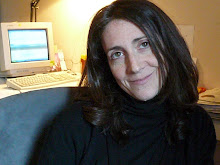 It seems these days that we’re always talking about Asian imports. Are they good or bad for Western economies? Are they good or bad for Asian economies? But there was a time when things imported from China and Japan were exotic and prized. And that’s when Turkestán got its start and that’s where this story of three Juan Sastres started.
It seems these days that we’re always talking about Asian imports. Are they good or bad for Western economies? Are they good or bad for Asian economies? But there was a time when things imported from China and Japan were exotic and prized. And that’s when Turkestán got its start and that’s where this story of three Juan Sastres started.Juan Antonio Sastre, grandfather of the Juan Sastre currently at the helm, worked for an import company and when the owner retired he took over the business and opened Almacenes Juan A. Sastre. When his son joined the business in the mid-20’s they started importing rugs and carpets and then opened a factory to make their own, all hand-knotted, right here on Calle Balmes. They developed close relationships with their supplier in Iran, Afghanistan, Turquía … After learning the ropes in the store (because you have to touch rugs to really know them,) and studying in England (did you know there are important carpet schools outside Birmingham?) the son’s son, Juan Sastre, started travelling with his mother to visit the makers.
Since then he’s been all over (where they make rugs,) and seen tribes in Southern Iran care for their sheep, seen the wool dyed to blue – it comes out of the vats yellow and oxidizes to blue, passing through green momentarily, in minutes, and witnessed breathtaking pieces emerge
 among shacks and wandering chickens before his eyes directly from the minds eye of the weaver (here they used life-sized drawings on graph paper) and more than anything he’s seen that the most important lesson that his father taught him, that “quality is good business,” is true now more than ever. The Sastres know that each rug has a soul – that’s why they pick them out one by one, and that’s why the ADIFAD just organized a tribute to the middle Juan Sastre, for recognizing the story behind each design. Nothing was thrown away when the factory closed in 1997 – all of the tools and machinery went to museums and the drawing archive is still in the store (like the one above, from the rug in the chapel at Montserrat.) Now that’s art history.
among shacks and wandering chickens before his eyes directly from the minds eye of the weaver (here they used life-sized drawings on graph paper) and more than anything he’s seen that the most important lesson that his father taught him, that “quality is good business,” is true now more than ever. The Sastres know that each rug has a soul – that’s why they pick them out one by one, and that’s why the ADIFAD just organized a tribute to the middle Juan Sastre, for recognizing the story behind each design. Nothing was thrown away when the factory closed in 1997 – all of the tools and machinery went to museums and the drawing archive is still in the store (like the one above, from the rug in the chapel at Montserrat.) Now that’s art history. Turkestán:
Rambla Cataluña 76
tel 93 215 2303

